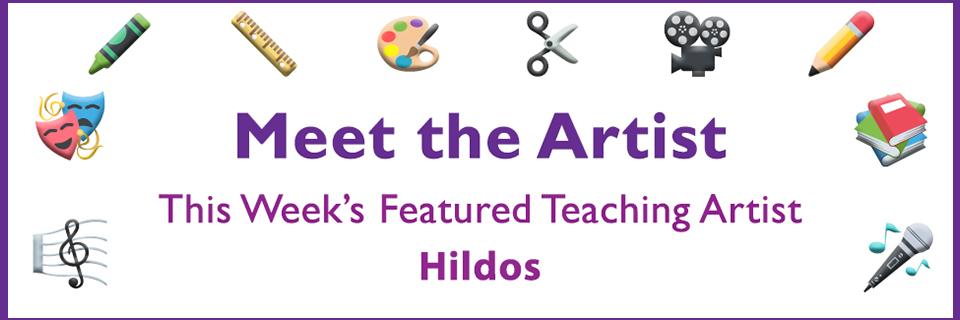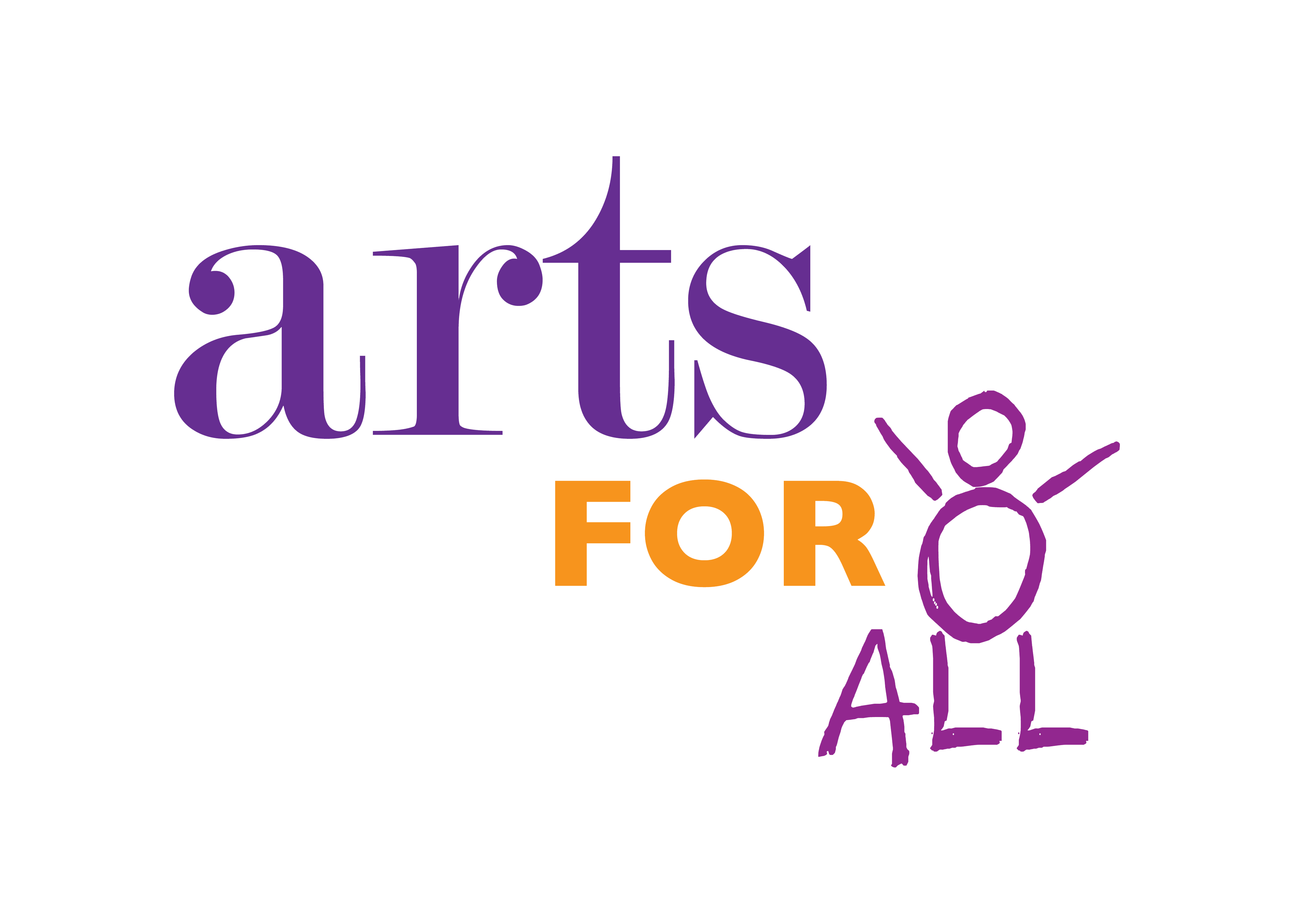
Interview by AFA Intern Mackenzie Timbrell in Spring of 2024
Q: Who are you?
Hildos: I am Hildos! I am an artist, a positive body image activist, a sister, a dancer, a cook, and a photographer. I also created a comic strip called Hildos In The City. I am a person who loves life and is full of energy. I am really focused on making a difference, which is why I left corporate work to be a teaching artist.
Q: How did you first get involved in your many different art disciplines, and what is your art education background?
Hildos: It started when I was five, when I went to an art school for kids every Saturday for three hours. Growing up in Lebanon, I was always attending some sort of art class, whether it be piano, ballet, or visual arts. I really had a full range of art activities I was involved in. In college, I applied to programs in psychology and English, but one of my classmates saw my doodles in my notebooks and encouraged me to try a career in the arts. So, I transferred to fine arts and art education studies at the same school! When I started out in my career, I began in advertising and graphic design, working on illustrations for magazines, and this is where I fell in love with drawing. Then, I decided to do a master’s in marketing and communication to help me promote my own art. I also participated in a one-week course at SVA where I did a project predicting where we would be in five years, and I realized after I wrote it that it was entirely different from where I was at that moment in my life. I submitted my resignation from my job and moved to New York full-time after a year. During a residency at SVA shortly after I moved to New York, I decided to focus my art on making a difference through body positivity and illustration.
Q: What drew you to Arts For All? What are some of the projects you have been working on with students so far?
Hildos: I am interested in any company that hires artists to teach in public schools. I enjoy this job so much because I feel that with every class I teach, I am able to make a difference. I try my best to make sure that when I leave a classroom after a teaching session, every child feels like they have learned something and enjoyed themselves. A lot of schools that we go to teach at don’t have art programs or art materials other than markers and colored pencils, so these types of nonprofits are so important. I just taught some students wet-on-wet watercolor drawing, and their reactions to the mixtures were so amazing to see.
Q: How do the children you work with inspire you to continue being a teaching artist?
Hildos: When I see the ways that kids react when I show them new art techniques and try new materials, it makes me so happy as an artist and a teacher. The younger kids inspire me through their lack of inhibitions. They are so free in the way that they make their artwork, and it makes me happy to see them being able to show that side of themselves at such a young age. Each one of us wants the students to succeed, and it is so rewarding when you see that happening.
Q: What is one of the main takeaways you hope the students gain from your classes?
Hildos: I hope that students learn to be themselves and to be self-confident. I want them to follow their own dreams and not have to follow what other people want for them.
Q: Do you have any favorite in-classroom moments working with students?
Hildos: Generally, I love when students express themselves through their art, even if they feel uncomfortable doing it with peers or their teachers. Every teaching artist is there to make sure that happens for every student. A lot of students have trouble expressing themselves, and art is an amazing way to do that.
Q: What does art mean to you?
Hildos: Art is a message. Every artist needs to be very careful not to fall into trends because art really is a message. We use art—any form of art—to make a change. You may be able to sell more art if you are following trends, but art with a message has such a deep and meaningful impact on society. I always say art is a message and a responsibility, but the message should not be imposed; it should just be shared. There is so much beauty in every person understanding art and its message in a different way.
